Follow Us x
Gum Grafting in Lafayette, LA
Gum grafting is the method commonly used to restore gum tissue to receding gums. Receding gums are one of the visible signs of periodontal disease and have the ability to encourage further damage by allowing greater access to the bacteria that causes it. Dr. James Finley, D.M.D, offers four types of gum grafting to patients with receding gums.
Connective-Tissue Gum Grafting
Connective-tissue gum grafting is the most frequently used method to repair receding gums. In this procedure, a flap of skin is made in the roof of your mouth and donor tissue is taken from that site. The flap is smoothed back into place and sutured. The donor tissue is then attached to the area around the exposed tooth. In each method, donor tissue will integrate with the tissue surrounding your receding gums, over time.
Free Gingival Gum Grafting
With free gingival gum grafting, the donor tissue is taken directly from the roof of the mouth and attached to the site of the receding gums. This is very effective for patients who have thin gums. In each method, donor tissue will integrate with the tissue surrounding your receding gums, over time.
Pedicle Gum Grafting
Pedicle gum grafting is slightly different from the other methods, as the donor tissue is not harvested from the roof of your mouth. Instead, gum tissue surrounding the site of the receding gums is utilized. A flap, or pedicle, is cut into the gum tissue and then gently stretched to cover the exposed root. The pedicle is stitched into place and eventually integrates with the original gum tissue. This method of gum grafting is successful for patients with ample gum tissue around the site of the receding gums.
AlloDerm® Regenerative Tissue Matrix is often used in dental grafts to cover exposed tooth roots, for gingival augmentation, soft tissue ridge augmentation, and soft tissue augmentation around dental implants. AlloDerm® is the most published acellular dermal matrix (ADM) in implant dentistry and has been shown to significantly reduce post-operative complications.
AlloDerm® is derived from donated human skin tissue. Human skin is composed of both epidermis and dermis. AlloDerm® uses only the dermis, which is acellular and does not contain DNA. The dermis is used for grafts because it contains a framework of biochemical and structural components that allow it to regenerate and replace itself throughout life. This makes the dermis ideal for tissue grafting.
Tissue donors are screened and tested for transmissible diseases including HIV, hepatitis, and syphilis before tissue is processed. Before AlloDerm® is deemed fit for human use, additional tests are performed to assure patient safety. AlloDerm® has been used in more than 750,000 implants and grafts without a single report of disease transmission.
Using AlloDerm® is like using a patient's own tissue except that it spares the patient a second surgical site where the tissue would have been taken. AlloDerm® allows doctors the ability to treat multiple areas of recession in one procedure, thus avoiding the cost and pain of multiple surgeries.
After the gum grafting procedure, Dr. Finley will give you post-operative instructions that will help you to encourage a healthy healing environment for your graft. Small temporary changes, such as diet restrictions, the use of special mouthwashes, and avoiding the area when brushing will increase the likelihood of gum grafting success.
If you have receding gums and would like to discuss the benefits of gum grafting with Dr. Finley, contact our office today.
Dr. James M. Finley, located in Lafayette, LA, is a Periodontist who serves patients from Lafayette, Crowley, Breaux Bridge, Opelousas, St. Martinville, New Iberia, Abbeville, Maurice, and surrounding areas. We are looking forward to welcoming you to our office and encourage you to schedule your appointment today!
Have Additional Questions? Call Now: (337) 233-0440
Ready to Schedule Your Appointment? Click Here!


